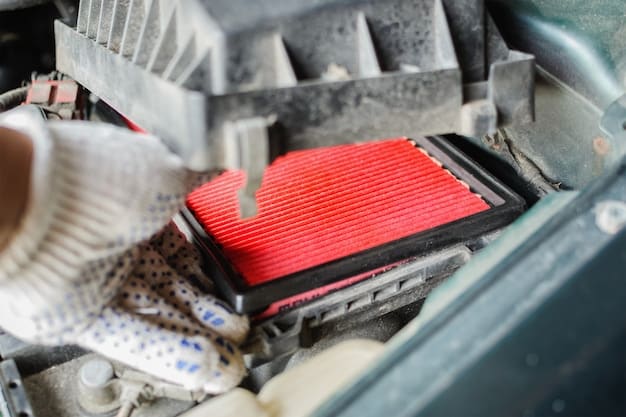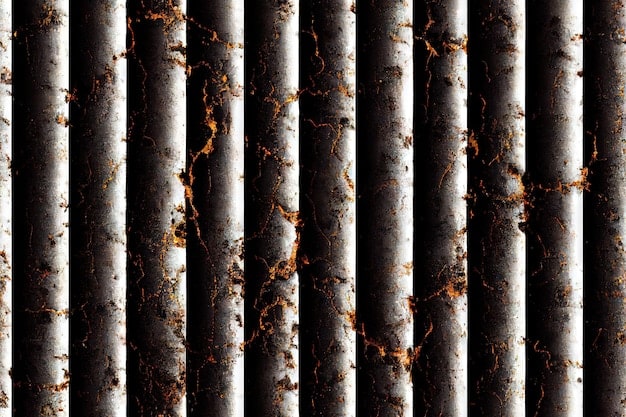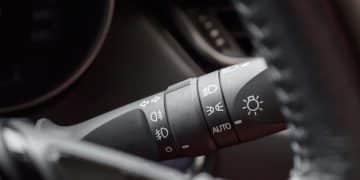Radiator Flush: The Ultimate Guide to Engine Health

Radiator flush is a crucial car maintenance procedure that prevents overheating and engine damage by removing contaminants, rust, and scale buildup from the cooling system, ensuring efficient temperature regulation.
Is your car prone to overheating? A simple yet effective solution lies in a radiator flush. This ultimate guide will walk you through everything you need to know about preventing overheating and engine damage with this essential maintenance procedure.
Understanding the Importance of a Radiator Flush
The radiator is the heart of your car’s cooling system, responsible for dissipating heat and maintaining optimal engine temperature. Over time, however, the coolant can become contaminated, leading to a buildup of rust, scale, and other deposits that reduce its effectiveness.
A radiator flush is a process of removing this old, contaminated coolant and replacing it with fresh coolant, ensuring that your cooling system operates efficiently and effectively.
Why is a Radiator Flush Necessary?
Regular radiator flushes are essential for maintaining the health and longevity of your engine. Here are some key reasons why:
- Prevents Overheating: Contaminated coolant reduces heat transfer efficiency, leading to overheating, which can cause severe engine damage.
- Removes Rust and Scale: Buildup of rust and scale restricts coolant flow, reducing the cooling system’s capacity.
- Extends Engine Life: By maintaining optimal engine temperature and preventing corrosion, radiator flushes contribute to a longer engine lifespan.
- Improves Fuel Efficiency: An efficiently cooled engine operates at its optimal temperature, improving fuel economy.
Neglecting radiator flushes can lead to costly repairs and potentially catastrophic engine failure. Next we’ll break down what happens if you don’t perform regular antifreeze fluid exchanges; it’s not pretty!
The Dire Consequences of Neglecting Radiator Flushes
Skipping radiator flushes might seem like a way to save money in the short term, but the long-term consequences can be far more expensive and damaging. It’s an easy form of preventative car maintenance that anyone can do, with an array of benefits.
The buildup of contaminants and the depletion of coolant additives can have a cascading effect on your engine’s health, leading to a variety of serious issues.

What Can Happen If You Don’t Flush Your Radiator?
Ignoring recommended radiator flush intervals can result in:
- Engine Overheating: As coolant becomes less effective, the engine struggles to maintain a safe operating temperature, leading to potential overheating.
- Damaged Water Pump: Contaminants in the coolant can damage the water pump, which is responsible for circulating coolant throughout the engine.
- Corroded Radiator: Rust and scale buildup can corrode the radiator, leading to leaks and reduced cooling capacity.
- Head Gasket Failure: Overheating can cause the head gasket to fail, resulting in significant engine damage and costly repairs.
Don’t let neglecting this simple maintenance task turn into a major engine overhaul. Prioritize regular radiator flushes to protect your investment.
When it comes to car maintenance, a little bit of prevention is worth a whole lot of cure.
Recognizing the Symptoms: When to Flush Your Radiator
Knowing when to flush your radiator can save you from potential engine damage. Recognizing the warning signs is crucial for proactive car maintenance.
While following the manufacturer’s recommended maintenance schedule is always a good idea, there are also certain symptoms that can indicate your radiator needs immediate attention.
Signs Your Radiator Needs Flushing
Keep an eye out for these common indicators:
- Overheating Engine: If your engine temperature gauge consistently reads higher than normal, it’s a sign your cooling system isn’t working efficiently.
- Visible Rust in Coolant: Inspect your coolant reservoir. If the coolant appears rusty or discolored, it’s a clear indication of contamination.
- Sludge Buildup: Check for sludge or sediment in the coolant reservoir or radiator. This is a sign of significant contamination.
- Leaking Coolant: If you notice coolant leaks around the radiator or engine, it could be due to corrosion caused by contaminated coolant.
Addressing these symptoms promptly can prevent minor issues from escalating into major problems. Now, let’s explore the step-by-step process for performing a radiator flush. Doing it yourself can be a great way to save money; just be sure to handle all materials safely.
DIY Radiator Flush: A Step-by-Step Guide
Performing a radiator flush yourself can save you money and give you a better understanding of your car’s cooling system. But safety and precision are key. It’s important to follow the instructions carefully.
Before you begin, make sure you have the necessary tools and materials on hand, including fresh coolant, a radiator flush kit, a wrench, and safety glasses.

How to Perform a Radiator Flush
Follow these steps for a successful DIY radiator flush:
- Preparation: Allow the engine to cool completely. Locate the radiator drain plug, usually at the bottom of the radiator.
- Draining the Old Coolant: Open the drain plug and allow the old coolant to drain completely into a container. Dispose of the coolant properly at a recycling center.
- Flushing the System: Close the drain plug and fill the radiator with distilled water. Start the engine and let it run for about 10-15 minutes.
- Draining Again: Allow the engine to cool, then drain the distilled water. Repeat the flushing process until the water runs clear.
- Adding Fresh Coolant: Mix the fresh coolant with distilled water according to the manufacturer’s recommendations. Fill the radiator with the coolant mixture.
Always consult your car’s owner’s manual for specific instructions and coolant recommendations. It’s also important to be extremely careful when handling hot automotive fluids.
Choosing the Right Coolant: A Critical Decision
Selecting the right coolant is crucial for maintaining your engine’s health and preventing corrosion. Coolant types vary in chemical composition and compatibility with different vehicle makes and models.
Using the wrong coolant can lead to corrosion, damage to cooling system components, and reduced heat transfer efficiency.
Understanding Coolant Types: OAT, HOAT, and IAT
Here’s a breakdown of the common coolant types:
- OAT (Organic Acid Technology): Long-life coolant suitable for many modern vehicles. Typically orange, red, or purple.
- HOAT (Hybrid Organic Acid Technology): A hybrid of OAT and IAT, offering extended protection. Often yellow or gold.
- IAT (Inorganic Acid Technology): Traditional coolant with a shorter lifespan. Typically green.
Always refer to your car’s owner’s manual for the recommended coolant type. Mixing different coolant types can lead to chemical reactions that damage your cooling system. Some coolants are even premixes, removing any need to dilute.
Using the right coolant ensures optimal protection and extends the life of your cooling system. But there’s still plenty of room to make mistakes if you aren’t careful.
Coolant mixtures can vary greatly, so it is crucial to always reference the car’s make and model and the coolant manufacturer’s instructions to make sure you’ve got the right ratios.
Professional Radiator Flush: When to Seek Expert Help
While a DIY radiator flush can be a cost-effective option, there are times when seeking professional help is the best course of action. If you’re uncomfortable performing the procedure yourself or if you encounter any complications, a qualified mechanic can provide expert assistance.
Plus, if you’re trying to sell your car, a professional radiator flush history can be a great benefit. It shows that you put the work in to keep the car in top condition.
Benefits of a Professional Radiator Flush
Consider these advantages of a professional radiator flush:
- Expertise and Experience: Mechanics have the knowledge and experience to perform the procedure correctly and efficiently.
- Specialized Equipment: Professional shops have specialized equipment for thorough flushing and coolant recycling.
- Inspection and Diagnosis: Mechanics can inspect the entire cooling system for potential issues and provide accurate diagnoses.
- Warranty Protection: Professional services often come with a warranty, providing added peace of mind.
If you’re unsure about any aspect of the radiator flush process, don’t hesitate to consult a professional. Protecting your engine is worth the investment. Sometimes, it’s best to trust the specialists.
When it comes to automotive maintenance, it’s best to err on the side of caution. Finding a competent professional mechanic is essential for keeping it in peak shape.
| Key Point | Brief Description |
|---|---|
| 🌡️ Prevents Overheating | Removes contaminants that hinder heat dissipation, avoiding engine overheating. |
| ⚙️ Extends Engine Life | Reduces corrosion and wear, prolonging the engine’s lifespan. |
| 💧 Improves Coolant Flow | Removes debris and build-up, improving coolant circulation. |
| ⛽ Boosts Fuel Economy | Helps the engine maintain an optimal temperature to enhance fuel efficiency. |
Frequently Asked Questions
▼
Most manufacturers recommend a radiator flush every 30,000 to 50,000 miles, or every two to three years. Always refer to your vehicle’s owner’s manual for specific recommendations.
▼
No, tap water contains minerals that can cause scale buildup and corrosion in your cooling system. Always use distilled water for radiator flushes and coolant mixtures.
▼
Consult your vehicle’s owner’s manual for the recommended coolant type. Using the wrong coolant can lead to corrosion and damage to cooling system components.
▼
No, mixing different coolant types can lead to chemical reactions that damage your cooling system. Always use the same type of coolant specified in your vehicle’s owner’s manual.
▼
Signs of a failing radiator include engine overheating, visible rust in the coolant, sludge buildup, and coolant leaks. Address these issues promptly to prevent further damage.
Conclusion
Performing regular radiator flushes is essential for maintaining the health and longevity of your engine, preventing overheating, and avoiding costly repairs. Whether you choose to do it yourself or seek professional help, prioritizing this maintenance task will keep your car running smoothly for years to come.





